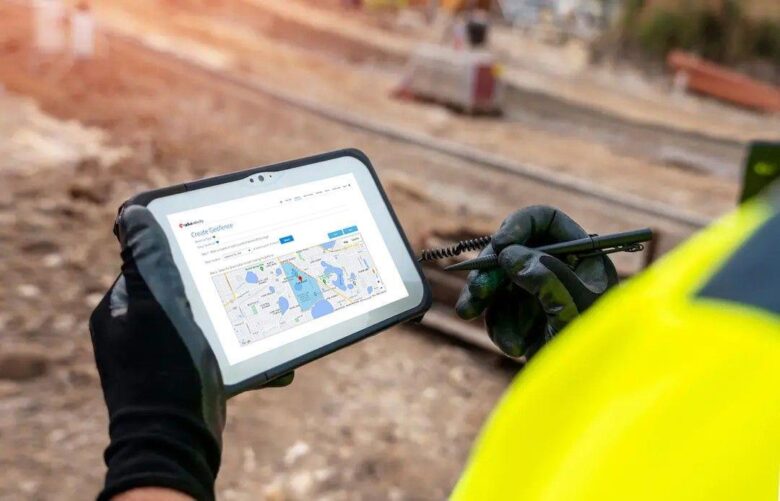Fleet management is a crucial aspect of modern businesses, especially those that rely on transportation for their operations. Telematics technology has emerged as a game-changer in this field, offering innovative solutions to enhance fleet efficiency.
In this blog post, we’ll explore the top five ways telematics can transform your fleet operations, ensuring you get the most out of your vehicles and drivers. Let’s discover how telematics can revolutionize your fleet management with radius.com.
1. Optimize Route Planning and Navigation

Efficient route planning is critical for reducing fuel consumption and improving delivery times. Telematics systems provide real-time traffic updates, road conditions, and the most efficient routes. Here’s how it works:
- Real-Time Traffic Data: Telematics systems use GPS and other sensors to gather real-time traffic information. This data helps fleet managers avoid congested areas, road closures, and accidents, ensuring that drivers take the fastest and most efficient routes. By avoiding traffic jams and other delays, businesses can save time and reduce operational costs.
- Dynamic Route Adjustments: With telematics, routes can be adjusted dynamically based on current conditions. If an unexpected delay occurs, the system can suggest alternative routes to keep the delivery on schedule. This flexibility allows businesses to respond quickly to changing conditions, maintaining service reliability.
- Improved Customer Satisfaction: Efficient routing ensures timely deliveries, which leads to higher customer satisfaction and repeat business. Happy customers are more likely to remain loyal and recommend the service to others. This positive feedback loop can drive long-term growth and success for businesses.
2. Monitor Driver Behavior

Driver behavior significantly impacts fuel efficiency, vehicle wear and tear, and overall safety. Telematics systems provide detailed insights into how drivers operate their vehicles, allowing fleet managers to address issues and improve performance.
Speeding and Harsh Braking
Telematics systems monitor and report instances of speeding, harsh braking, and rapid acceleration. These behaviors increase fuel consumption and vehicle maintenance costs. By identifying and correcting these habits, businesses can save on fuel and reduce repair expenses.
Idling Time
Excessive idling wastes fuel and contributes to engine wear. Telematics can track idling times and help managers implement policies to reduce unnecessary idling. Reducing idling not only saves fuel but also lowers emissions, contributing to environmental sustainability.
Driver Training
With data from telematics, fleet managers can identify areas where drivers need improvement and provide targeted training to promote safer and more efficient driving habits. Ongoing training ensures that drivers remain aware of best practices and continue to improve their performance over time.
3. Preventive Maintenance and Diagnostics

Source: freepik.com
Regular maintenance is essential for keeping a fleet in optimal condition. Telematics systems provide real-time diagnostics and alerts, helping managers stay on top of maintenance needs and prevent costly breakdowns.
- Diagnostic Trouble Codes (DTCs): Telematics systems can read and report DTCs, allowing managers to address issues before they become major problems. Early detection of issues can prevent more severe damage and reduce repair costs. This proactive approach minimizes downtime and keeps vehicles on the road.
- Scheduled Maintenance Alerts: Telematics can track vehicle usage and schedule maintenance based on actual wear and tear rather than arbitrary time intervals. This approach ensures that maintenance is performed when needed, reducing downtime and extending the life of the vehicles. Accurate scheduling also helps in planning and budgeting for maintenance activities.
- Remote Diagnostics: In some cases, telematics systems can perform remote diagnostics, allowing technicians to identify and resolve issues without bringing the vehicle into the shop. This capability saves time and reduces the need for physical inspections, further enhancing operational efficiency.
4. Enhance Fuel Management

Source: Freepik.com
Fuel is one of the most significant expenses for fleet operators. Telematics systems provide detailed insights into fuel usage, helping managers identify and address inefficiencies.
Fuel Consumption Tracking
Telematics systems track fuel consumption in real-time, providing insights into how much fuel is used by each vehicle and identifying patterns of excessive use. This information enables managers to make informed decisions about fuel-saving strategies. Monitoring fuel consumption helps in detecting anomalies that may indicate issues like fuel theft or vehicle malfunction.
Fuel Theft Prevention
By monitoring fuel levels and usage, telematics can detect potential fuel theft and alert managers to investigate. Preventing fuel theft directly impacts the bottom line, reducing unnecessary expenses and improving overall profitability.
Eco-Driving Initiatives
Telematics data can be used to promote eco-driving practices, such as reducing idling, maintaining steady speeds, and avoiding rapid acceleration and braking. These practices can significantly reduce fuel consumption and emissions. Encouraging eco-driving not only saves costs but also enhances the company’s environmental reputation.
5. Improve Asset Utilization

Effective asset utilization ensures that fleet vehicles are used efficiently, maximizing productivity and minimizing costs. Telematics systems provide insights into how vehicles are used, helping managers optimize their fleet operations.
- Vehicle Utilization Reports: Telematics systems generate reports on vehicle usage, highlighting underutilized assets. This information allows managers to redistribute workloads and ensure that all vehicles are used effectively. Proper utilization of assets prevents unnecessary investments in additional vehicles and helps in maintaining a lean fleet.
- Right-Sizing the Fleet: By analyzing telematics data, fleet managers can determine if they have the right number of vehicles for their operations. This analysis can lead to downsizing or upsizing the fleet, as needed, to optimize efficiency. Right-sizing ensures that resources are allocated appropriately, avoiding both shortages and excesses.
- Reducing Unauthorized Use: Telematics can track vehicle locations and usage patterns, helping managers detect and prevent unauthorized use of fleet vehicles. Controlling unauthorized use reduces wear and tear, lowers fuel consumption, and minimizes liability risks associated with misuse.
Improve Compliance and Safety!
Ensuring compliance with regulations and enhancing safety is a priority for any fleet management operation. Telematics systems play a significant role in achieving these goals by providing detailed reports and real-time data on various aspects of fleet operations.
The Bottom Line
Telematics technology offers numerous benefits for fleet management, from optimizing route planning and monitoring driver behavior to enhancing fuel management and improving asset utilization.
By leveraging the power of telematics, businesses can significantly improve their fleet efficiency, reduce costs, and boost productivity. Implementing telematics in your fleet operations may seem daunting, but the long-term benefits far outweigh the initial investment.




